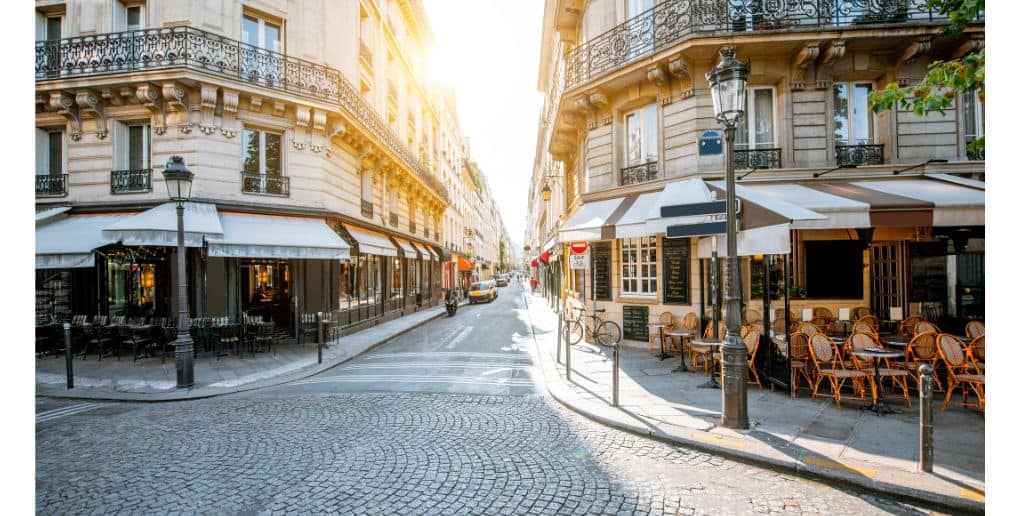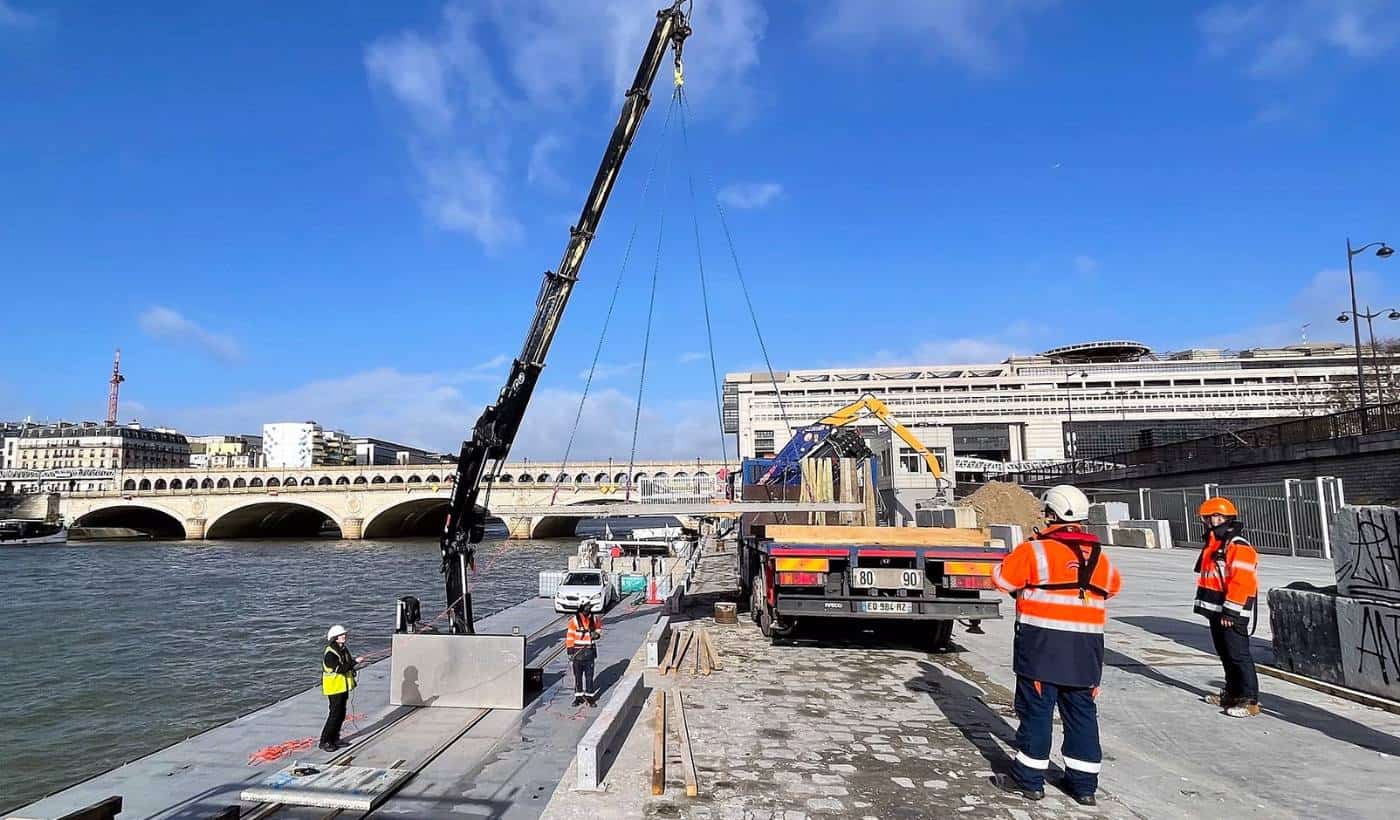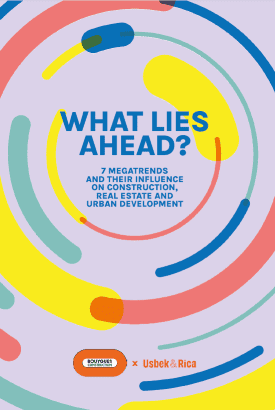
The car park: a new enabler for residents’ lives?
4 minutes of reading
in partnership with


Originally, car parks were created around a need: vehicle parking. But today, at a time when the place of cars is being called into question in cities, the potential of these infrastructure networks opens up new prospects for building future cities.

There are 1.4 million parking spaces in France, of which just under 600,000 are on-street and the rest are underground, in 1,663 car parks throughout the country. But while parking policies have long allowed development of cities, the present period – which seeks to rebalance public space in favour of environmentally-friendly transport – has interrupted this cycle.
Today, the question is not so much whether to build car parks – when, in many cases, these infrastructures are still lacking to facilitate intermodal connections – but rather how to optimise their use so that they are even better integrated into future cities.
Car parks have the advantage of being strategically located: near city centres, train stations, airports, shopping centres, exhibition centres, hospitals, etc. A regional network that gives them an attractive value for the sustainable city’s new uses. Like third places, they can therefore offer city dwellers a range of services that is expanding year by year: electric vehicle charging points, short-term rental of electric scooters, hoverboards, gyropods and motorised skateboards, minor repairs, courier services, urban logistics, locker services, etc.



A major asset for the development of environmentally-friendly transport
The development of charging stations for electric vehicles is essential to enable the reduction of greenhouse gases produced by the transport sector. After all, what’s the point of selling electric vehicles if you can’t charge them anywhere? While France has around 40,000 charging points to date – with a target of 100,000 to be reached in the coming months – car parks represent a considerable asset for accelerating their rollout. Moreover, the law is not mistaken, since the French mobility orientation law on transport (LOM) requires companies, for example, to install charging stations in their parking spaces. In the city, car parks are also relevant spaces for rolling out these infrastructures. But beyond this aspect, the car park is also a means to encourage intermodal connections: i.e. the use of several modes of transport on the same journey. They are also strategic locations for installing scooter or bike-share parks. This use is also increasingly favoured by cities, which are replacing on-street car parking with parking spaces for non-motorised transport. There are various experiments on this subject: in Canada, for example, with a partnership between Indigo and the operator Bird, or in France with the example of Q-Park and Lime, which are experimenting with this system in three Parisian car parks. And to complete the circle between environmentally-friendly transport and intermodal connections, the company Yespark, which is developing a solution for sharing private car parks, is also partnering with the Dott brand of scooters to offer battery recharging for these small contraptions.
Underground car parks, a new opportunity for parking electric scooters, hoverboards, gyropods and motorised skateboards. Credit: Freeze frames – Getty Images
A means to accelerate the rollout of solar electricity panels (photovoltaics)
How can we encourage the rollout of solar photovoltaic parks while following a Zero Net Artificialisation approach? This is a real dilemma for communities. Here again, the parking infrastructure represents a real opportunity because these already artificially developed areas are suitable for the installation of solar panel shading. In fact, the trend is already well underway. The SNCF, for example, is going to install 8,000 m2 of solar panels on the car park at Nîmes station and then intends to replicate this model on over one million m2 of car parks. The French Climate and Resilience Law of August 2021 reinforces the obligation to install photovoltaic panels or green roofs on warehouses, hangars and car parks. All car parks of more than 500 m2 are impacted by this obligation. Some big operators have already launched large-scale projects on this subject, without waiting for the law. For example, Disneyland Paris is going to install 12,000 solar panels on its parking spaces.
Indoor farming could also benefit from renovation of parking spaces in cities. Credit: Kinny – Getty Images
Urban agriculture and parcel delivery
Beyond the two aspects of renewable energy and electric transport, some operators are also exploring the potential of car parks for new uses, all in connection with the transition to environmentally-friendly transport. Still on the subject of transport, car parks are obviously places that are also conducive to maintenance service installation with minor repairs for cars, scooters or bicycles. Other uses are more original. This is the case for urban agriculture. Underground car parks, for example, allow development of this activity. This is an intelligent way of acquiring local, high quality food without taking up too much of the already crowded public space. For example, this is what the startup Cycloponics is proposing, in operating an underground car park at Porte de la Chapelle, Paris since 2017 to grow organic fruit and vegetables. The company is currently rolling out the same concept in Bordeaux and Lyon, France. Another possible use of these urban infrastructures is to use them as relay points for parcel delivery. Indeed, the regional network of parking spaces is interesting because they are by nature installed in tactical locations. This is the challenge taken up by the company Indigo, which is testing this option in Paris in two of its car parks, which have been transformed into “logistics hubs” for the delivery of food products to Parisians. The company is also considering converting some of these parking spaces to accommodate locker and parcel services. This is also a way of responding to the growth of e-commerce and the hundreds of millions of parcels that are exchanged each year in France. In short, car parks have been transforming in recent years, from the development of electric transport and environmentally-friendly transport to urban logistics or left-luggage services and the potential development of renewable energies. This metamorphosis also allows cities and development specialists to better anticipate these multiple uses in their project design in order to fully integrate future car parks into sustainable cities.
SpringTime78 on Getty Images
Most read
More reading
Read also

Article
20 minutes of reading

Energy
in partnership with


‘Paris at 50°C’: a fact-finding mission to prepare Paris for future heatwaves
Article
2 minutes of reading

What if your sites were supplied via rivers instead of roads?
Article
3 minutes of reading



